Hello everyone! I’m Ben, Hannah’s husband; I’m an Anaesthetic doctor working in the NHS and I’m taking over this month’s medical post to try and give you some insights into a key part of my job: epidurals and caesarean sections. I know that many women would prefer to have minimal or no medical intervention when it comes to their childbirth experience, but as I am sure you all know, sometimes things don’t go to plan, and if that does happen, I think it really helps with the fear-factor if you know what to expect. I hope to dispel a few myths and leave you with greater understanding so that you might feel more empowered, should you ever face these situations.
I thought it would be useful to walk through what happens on the day when someone comes for a planned (elective) caesarean section.The process is essentially exactly the same as an emergency caesarean section, but as this usually happens to avoid potential harm occurring to either mother or baby, things tend to move a bit more quickly. Most women I meet are understandably nervous at the prospect of a caesarean, and a major part of my role is to guide them through the process, and look after them until they are safely in the recovery area with their family and new baby. I have often found that the most important thing in mitigating some of the fears of surgery and the anaesthetic is knowledge and understanding of what is going on, and why. Do remember that we all want you to have the best experience possible; I know that people can have quite different desires but whatever they are, we want to work with you – it is your big day after all!
On the day of your C-section usually you will come to one of the wards near to the labour ward/delivery suite, and will likely be given some paperwork to fill out. You should have already been given advice about when and what not to eat and drink depending on the local policies and the timings on the day. You will meet your anaesthetist and your obstetric surgeon, and be asked a lot of the same questions again and again, but please, bear with us, we are just making sure everything is safe. We will check things like any past medical history and medications, check your blood tests and generally make sure there is nothing unexpected for when we get into theatre. This is of course a good opportunity for you to ask us any questions you might have, although if you have major concerns you should bring them up with your midwife before the morning of surgery and they can help arrange for you to see an anaesthetist in a pre-op clinic.
For me, the most important part of this morning meeting is to try and get to know you and your birth partner a little; we are about to embark on one of the most memorable (and sometimes scary) experiences in life, and I want to help to look after you as best as possible. If you want distracting, we’ve got plenty of chatter, if you want to be left to yourself a bit more that is fine also; if you want to know everything that happens, or nothing that happens, just let us know! Usually, elective surgery happens on time, but of course if there is an emergency case that needs the delivery theatre then this would take priority. It is not unknown for surgery to be delayed or even cancelled and women brought back the next day, which may be inevitable, but is all the same understandably frustrating.
When theatres and the team are ready, you will be brought to the anaesthetic room, but in some smaller hospitals you will go straight into theatre. We will all be there ready, anaesthetists and assistants, midwife and assistants, obstetrician and assistants, sometimes there will be additional students or trainees – sometimes patients are quite alarmed to see the number of people present; this is all normal! We will introduce ourselves again and start our pre-theatre checks; name, date of birth, NHS number, etc. We routinely do a verbal check of all this basic information, just as a team of airline personnel check their pre-flight checks for safety.
Next, you will have monitoring attached: sticky ECG dots, a blood pressure cuff and an oxygen saturation peg on your finger. We will place an intravenous cannula into a vein in your hand/arm (with some local anaesthetic to numb the skin) and connect this to some IV fluids. Now, for a spinal anaesthetic or an epidural we will often ask you to sit up on the bed with your legs over the side and curled forward over a pillow to expose your lower back. It can be done with you lying on your side but this can be more difficult. The anaesthetist will dress in sterile gown, mask and gloves, and sterile drapes will be placed over your back; we also use an antiseptic spray on your skin that feels very cold when applied – sorry about this! It makes everyone jump! For the sake of sterility we often ask partners to wait outside of the room until the spinal anaesthetic is done.
The spinal anaesthetic involves a single injection of local anaesthetic solution into the fluid that bathes the nerves in the back, below where the spinal cord ends. It takes about 10 minutes to take full effect and lasts about 1.5 hours for operative anaesthetic, though weak legs and numbness can persist for around 8 hours. You will be awake, but numb from the chest down, you might feel pins and needles, warmth, pushing and pulling but shouldn’t feel pain. Often, a strong painkiller is added to the mix to give good post operative analgesia for about 24 hours, it can give you a really itchy nose and make you feel a bit sick, but it is usually well tolerated.
An epidural is similar, but slightly different to a “spinal”. It involves using a needle to place a small plastic tube into the epidural space – a layer just outside of the spinal cord membranes. Local anaesthetic in put down the tube and into the epidural space, where it blocks the nerves as they leave the spine. It takes a bit longer to put in place and for the effects to work; 30 minutes or so, plus it can be a bit less predictable than a spinal, sometimes leaving patches of skin that aren’t totally numb. It has the advantage that with the plastic tube, we can give more anaesthetic, or strong pain killers to “top it up” if we need. Epidurals used for analgesia in labour are the same principle but use a weak strength of local anaesthetic to try and find a balance of pain relief with mum still able to move and also help push. If we need to go to theatre but already have a good working epidural for labour pain relief, we can “top it up” but putting down some stronger medicines. Occasionally we combine the benefits of spinal (fast and reliable) with those of an epidural (can be topped up, more controlled) by doing both.
Once done, we help lie you down and position you with a tilt to the left to take some of the weight of your bump off your blood vessels. When ready, we test the anaesthetic with a very cold spray. The nerve fibres that carry cold sensation are the same as those that carry pain – so if you are numb to cold, you will be numb to pain. Some people can still feel something often described as “wet” or “like air” from the spray, this can be true for the surgery itself, it can be normal to feel dull touching sensations.
General anaesthesia (GA) means giving powerful drugs to put people off to sleep, plus putting a breathing tube to take over breathing and to protect the lungs from gastric acid. It is accepted to be the fastest and most reliable option but carries the biggest risks. It is usually reserved for emergency situations, where spinal or epidural has failed or cannot be used and occasionally at maternal request. Remember, it is what we, as the anaesthetic team, do day in, day out for lots of different types of surgery; we’ve got lots of training, equipment, and protocols to make it safe.
The most common way to have a caesarean section today is under a single shot spinal anaesthetic, it minimises any drugs passing through your circulation and into your baby, you are awake through the procedure so can hold your baby straight away and you have no hangover afterwards so recovery is much faster. That said, a general anaesthetic when needed is not something to be scared of; babies can be a little more drowsy immediately afterwards but this wears off very quickly and there is no evidence of them being harmed in any way. In fact, because of speed and the reduced effects on blood flow that we can see with a spinal, a general anaesthetic is still considered by some to be the best anaesthetic for your baby.
I won’t go into great detail on the actual surgical procedure, it’s not my particular area of expertise but also it’s not something you can actually see on the day. It can be done very quickly when needed, but for an elective C-section it usually takes 10-20 minutes before your baby is born and another 20 – 30 to stitch everything back neatly afterwards. Generally, once the baby is out safe and in your arms, most women don’t even notice this time passing, and once cleaned and dressed we will help get you into you hospital bed and back out into the recovery area.
I am personally a big advocate for skin-to-skin and as natural a birth as possible; yes the bright lights and number of people are not usually what people think of as relaxing, but even with a C-section birth you can still hold your baby straight away and share in this moment with your partner just like anyone else. If this is something you want, say so – often the baby is whisked away to ensure they don’t need any support with breathing, but then get dried, weighed and wrapped in blankets, rather than having immediate skin-to-skin with you. You can even have your own CD on if you want, just ask so we can work with you as best as possible!
Finally, to quote my obstetric anaesthesia consultant: “The best form of pain relief is a supportive partner.” If you’re pregnant and have found this helpful, get your partner to read it too, so you’re not having to reassure them on the day!
I hope that you found this post to be useful, please do leave me a comment and I’ll do my best to answer any questions below! I’ve also left a few links to some good additional information online.
Ben x
This is the Epidural information card we give out to all mothers, it includes some of the complications and risks that can be associated.
This site has loads of reliable information written by doctors, midwives and mothers on labour analgesia and anaesthesia options.





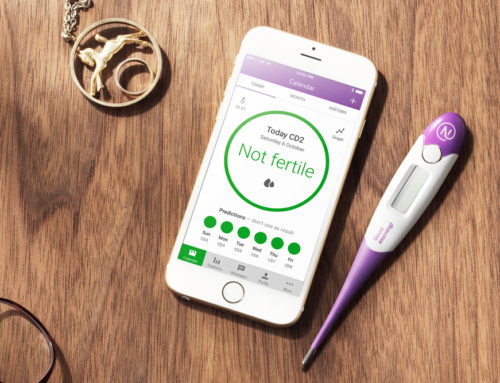
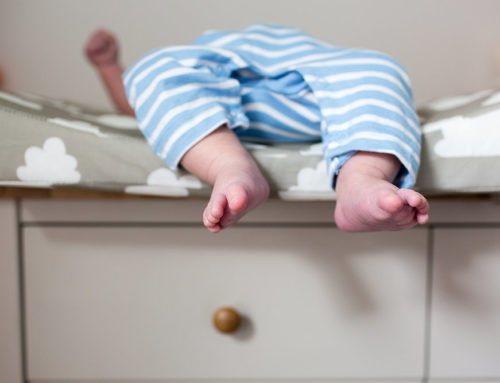

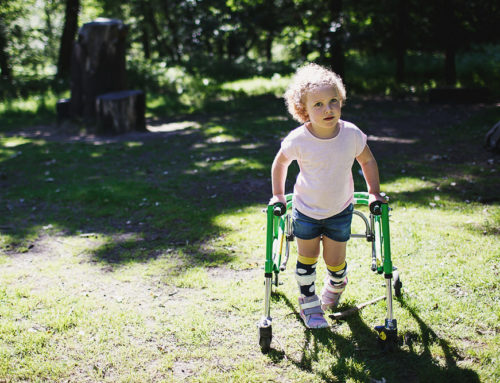
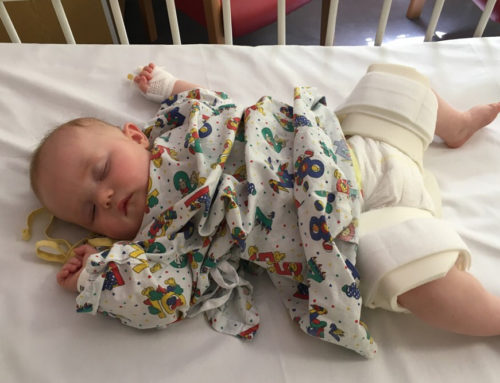

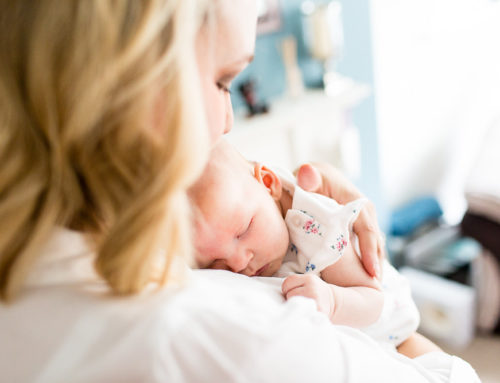

What a helpful and factual post, not only for those for whom a section is unavoidable but for those thinking about having an elective section too.
Thanks!
This is such a useful post, thank you.
With a general, does the baby go straight to dad (obviously can’t go to mum)? And how soon is it before mum gets to hold baby?
I’m hoping this won’t be me, I’m hoping for a homebirth with my second but she’s currently breech. We have a bit of a time but it’s on my mind as I’m unable to have any sort of spinal option due to extensive spinal surgery and the idea of her not getting skin to skin and being able to breastfeed straight away brings me out in a cold sweat!
Hi Anna, after a general anaesthetic for a section the baby would be checked over by your midwife and the paediatrics team in the theatre if needed. Usually partners won’t be in the room for a general anaesthetic but would be next door and yes they would be brought the baby as soon as they’ve been given the all clear.
Waking up from a general anaesthetic can leave mums feeling quite groggy for about 30-60 minutes, often a bit sick and sore. But, you wouldn’t have the weak legs from a spinal/epidural and of course can have cuddles and breast feed as soon as you are awake and feel able.
What an interesting post Ben, really enjoyed reading this, thank you.
Thanks!
This is really helpful Ben, thank you. I would ask if you’re able to add or for a future post could you include more information about the side effects? I know you don’t want to make people nervous but a very bright and breezy approach left me to diagnose my own dural puncture after being told the extreme headache was just a reaction to the drugs. By the time I had figured it out it was the weekend and the hospital advised me to wait until the following Tuesday for a slot with the senior consultant for a blood patch. That was a full week of being very unwell (unable to sit up or stand without vomiting from pain) which I feel could have been avoided had I been on the ball and demanded help sooner. Information is power, after all.
Hi Lucy, I’m sorry to hear you had this complication.
At the bottom of the main article I’ve put links to the patient information card covering risks and complications of spirals and epifurals. Also a link to a more in depth website with loads more specifics.
It sounds like you had what we call a post-dural puncture headache. The risk is about 1:200 after epidural and 1:500 after a spinal. They do usually get better on their own but they can be really awful and limit what new mums can do. If so, then after a few days we can do another epidural and a “blood patch” which can help in 50-75% of cases but does carry all the same risks of having an epidural in the first place.
If you get a really bad headache after a spinal/epidural, tell someone and you should be seen by an anaesthetist.
Thanks Ben, this is fab. I really didn’t want an epidural with my first baby, but due to fatigue and a long labour I ended up with one. It was fine actually; and if I need it with no 2 I won’t be as worried about it. In fact, I have never felt relief like it!
The only thing I didn’t expect was the uncontrollable shaking – nobody told me that happens! I had to wedge my arm between the trolley’s arm rest and the midwife’s backside to get it to stop. 🙂
Hi Tracy, yeah, this can happen and can be quite alarming. It’s usually worst when things happen after a long labour and is in part due to all the adrenaline surging around your body during labour. Also, the spinal/epidural means your body looses some control over temperature so even if you are kept nice and warm, people can feel cold… or hot… or not sure!
Hi Ben, thanks so much for your post!.
I’m pregnant with Twins due in October, and whilst I had always planned on having a natural birth, when we found out it was twins I now just want what’s safest for the babies!
This was so informative. I didn’t know you could request skin to skin with a C-section, so thanks for pointing this out!
Perhaps I will still get a natural birth, if the babies are playing ball! However, I feel confident now that a Cesarean would still be an exciting, wonderful experience.
Thanks!
You’re welcome, good luck!!
I’m lucky that I’ve not needed a c section, however with my first baby I did need a spinal to sort out a horrid tear 😱
It was an odd experience being with it – as much as one is after birth – and feeling pulling sensations in that “area”. However, it worked well and allowed the surgeon to do his thing! The staff were amazing, I’ve nothing but admiration, respect and thanks to the NHS professionals who looked after me and my babies. And the rest of the NHS too!
So from my experience don’t be scared if you need a spinal!
“Really weird” is often what we hear back from people about their experience. Some can find it quite unnerving. Often you would feel like your legs are where they were before they went numb (i.e. on the bed), seeing them somewhere else can be very odd, so usually I get people to close their eyes or put a screen up to prevent this!
What a brilliant post! I wish antenatal course would offer something as useful at this and I would have been much better prepared for an epidural instead of thinking of it as a last possible option. In our group, all but two ended up with an epidural or a spinal, most for c-sections. I had an epidural after being induced for five days and a spinal as well as I haemorrhaged badly and had to have an op. I still remember the kindness of the anaesthetist in the hospital, how reassuring he was before he set the epidural and the spinal (I have a fair amount of back/spine issues and was really concerned if an epidural was even possible), during the operation and how he checked in on us afterwards to congratulate us on our baby again and to see how I was doing.
I was lucky in that I had no side effects but a slightly sore back, which was hardly a surprise and I will definitely consider it again if we’re lucky enough to have another baby.
Numbers are a bit different around the country, but where I work about 1 in 5 babies are born by caesarean. Half of these are planned for one reason or another. So that leaves about 1 in 10 who come in labour will have a Caesarean section.
Epidurals for labour are very varied in take up from area to area. Some units have about 50% epidural rate, some have a much lower rate, ours is about 20%.
Great post Ben, thanks! Nice to see a balanced, objective summary. I had an elective c-section because my baby was breech and the surgical team couldn’t have been more accommodating – skin-to-skin was actively encouraged, they had the radio on but I was allowed to bring my own music too, they were happy to have cameras there – in fact, one member of the team took my husband’s phone and was snapping away, and even taking video, which was amazing to discover after the event!
Unfortunately something went wrong with my spinal, which I don’t fully understand to this day (despite having had a debrief with an anaesthetist post-op and also a follow-up several months later). Basically what was the usual ‘pushing and pulling’ they tell you about became extremely painful and it turned out the spinal wasn’t working as well as it should. I ended up have gas and air, then a strong IV painkiller, and then offered a general as it was clear nothing was working. So when they gave me my daughter, I was able to have a little cuddle but then was too overwhelmed with the pain and they had to take her off to look after her while my husband stayed with me. They ended up injecting local anaesthetic into my stomach in order to complete the final closing up. I’m now a bit terrified of the same thing happening again! My follow-up debrief recommended a combined spinal and epidural so that they could top it up if the spinal didn’t work again – have you ever come across this happening before?
Thanks!
Hi Laura, I’m sorry to hear this happened to you. I obviously can’t say exactly if there was a problem with yours but it sounded like you have had follow up which is good.
Epidurals can be a bit unpredictable but usually spinals are very effective for at least an hour as long as the height of the block has come up high enough (numb to light touch to just above your nipples).
However, an inadequate spinal/epidural is a known complication and is in part because everyone reacts slightly differently and we have just one chance to get it right. After that we have to manage as best we can with pain killers, gas and air, or converting to a general anaesthetic if needed. The important thing is to keep communicating how things are going. A combined spinal + epidural like your consultant suggested might be a way round this but does carry the risks of two procedures. Some places do it relatively routinely.
Thanks for this post Ben. My first labour involved an epidural (at my request as my daughter was lying back to back) and then being taken into theater for a forceps delivery as she was in distress, at which point the epidural was topped up. Your post has helped me understand what was happening behind the scenes.
I do have one question I would be really grateful if you could help me with. I actually passed out straight after the birth of my daughter (my bp dropped to 40/20) and before that I was numb from the neck down. Cue quite a scary time for me and more so my husband.
I’m now absolutely terrified of having another epidural. I am 35 weeks pregnant and adamant I’ll do it without any drugs this time, but I have a little “what if” voice at the back of my head….are some people just not compatible with epidural drugs or is it more likely that they just dosed me a bit too high and is it likely to happen again?
Hi Cat, just to say that after my epidural experience this was me and I was lucky enough to have a very fast straightforward labour with no interventions second time- really hoping it happens for you too. Xxx
Thank you Lucy, that’s so good to know. I’m 35 weeks now and hoping for a home birth so fingers crossed….x
Hi Cat, again I can’t know exactly what happened to you but there are a number of complications which are covered in the above links. It would probably be best for you to speak to someone who can look at your notes and give you specifics. You could ask your midwife/obstetrician if they can arrange for you to see an anaesthetist in clinic to make a plan for this baby. It would be nice to have time to do this before you go in to labour for the sake of your anaesthetist!
Thank you for this, Ben, as a pregnant woman it’s lovely to hear about this from your point of view, and also really reassuring to know that the medical team are committed to helping give us as very soon-to-be parents as good an experience as possible, which I know must be challenging when you have to be so focused on getting the ‘business’ side of your job done effectively. I had never really thought about that before and always thought of c-sections in particular as a very clinical procedure, so it’s lovely (and comforting) to know there’s an intensely human element to it as well.
Thanks India that’s really kind. We do our best. Day or night!
I had a planned c-section as my son was breach and it was actually a really lovely, calm experience. Everyone who looked after me was really lovely and funnily I can only remember the names of the 2 anaesthesiologists because they did such a great job keeping us amused and distracted during the procedure. I was a bit worried about getting the spinal anaesthetic as I knew I would be separated from my husband but it was over before I knew it and not as sore as I had prepared myself for. I know some women are disppointed when they have to have a c-section but for me it was actually a really positive experience.
Hi Ben, i had a planned c-section but had a reaction to the anaesthetic which meant it turned out to be an emergency. My blood pressure plummeted which meant my daughter’s heart rate rocketed. Why did this happen? I was kept nil by mouth for 18 hours as my slot was delayed – could this have been the reason? I had no blood pressure issues before. It would be interesting to know.
Hi Phillipa as above, it’s difficult for me to say much specific but you could speak to your midwife to arrange a debrief with an anaesthetist.
I loved this post!
I had an emergency c-section due to my baby’s heart rate not being what it should during labour and I was so relieved when the registrar told me I was going to theatre, as labour had been worrying to say the least with baby not moving.
My surgical team were amazing. They made us feel like it was the first baby they had ever delivered and, although, I haven’t delivered a baby naturally, I feel it was every bit as special, thanks to the team.
Are you the guy that sits by the head asking if we’re ok and constantly checking BP/heart rate etc? I mentioned to this person that I felt sick when being stitched up & he put something into my cannula that instantly made me feel better – what was that? And can I get it on prescription for my next pregnancy?!
Hi Carly, yep that’s us up at the head end by the machine! I’m glad you had a good experience. Often the sickness during the operation is actually because your blood pressure is a bit low and you feel it even before our machines can tell us!
If you feel sick say so, we can use a medicine to boost your blood pressure and usually this will make you feel better quickly.
As such I’m afraid it won’t work for nausea related to pregnancy!